Childhood Memories Of Flinders Island
I remember waking up to the sound of the ocean roaring. Often, when I was older, I'd leave my bedroom window open ajar so I could smell the wild surf as it crashed upon the beach outside the front of our house. I don't think I could find a bad memory of the place even if I tried.
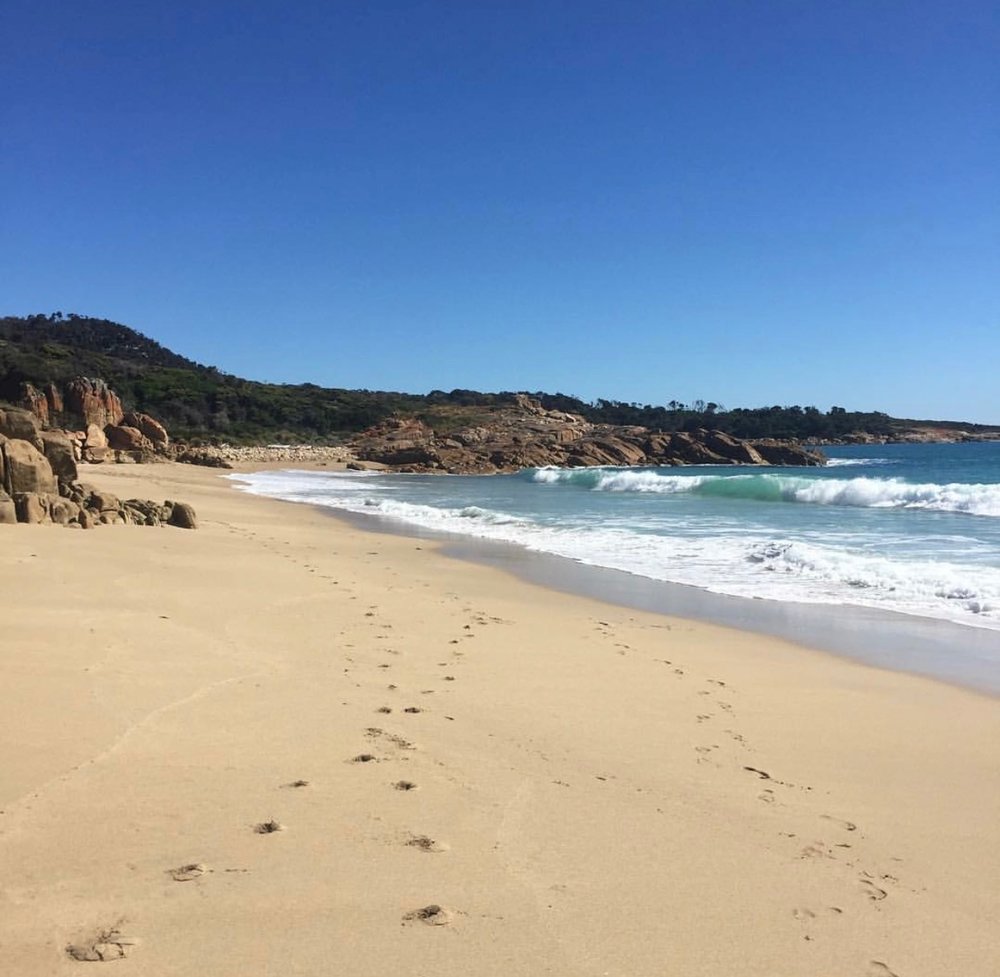
Flinders Island, Image courtesy of The Lions Den.
Very few people in this world are lucky enough to have an island they can call home. A place where the mountains meet the sea. Where turquoise waters meet white quartz rich sands on beaches that go for miles. Very few people can say they got to spend their childhood on an island Paradise.
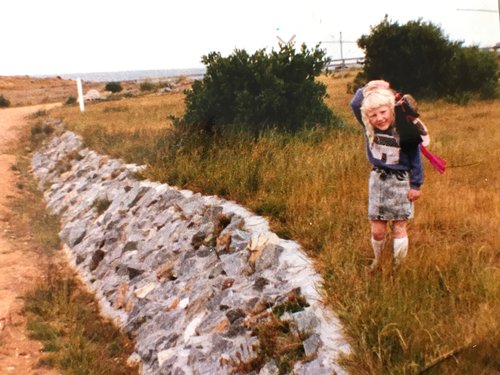
Me, as a young girl on Flinders Island
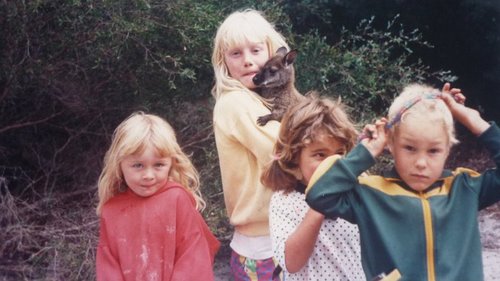
L-R. My sister, me, and two childhood friends with a wallaby we saved from a dog. Flinders Island.
My parents moved to Flinders Island when I was four and my sister was two months old. Having lived on Cape Barron Island with my aunt for a period of time, my mother says it was one of the most beautiful places she has ever been too. When the opportunity arose to move to nearby Flinders from Launceston, she jumped at the chance. My parents eventually separated and I ended up swapping homes between the two; on the Island and back in Launceston where my father returned to. These are the memories I have of living on the Island, on and off throughout my childhood.
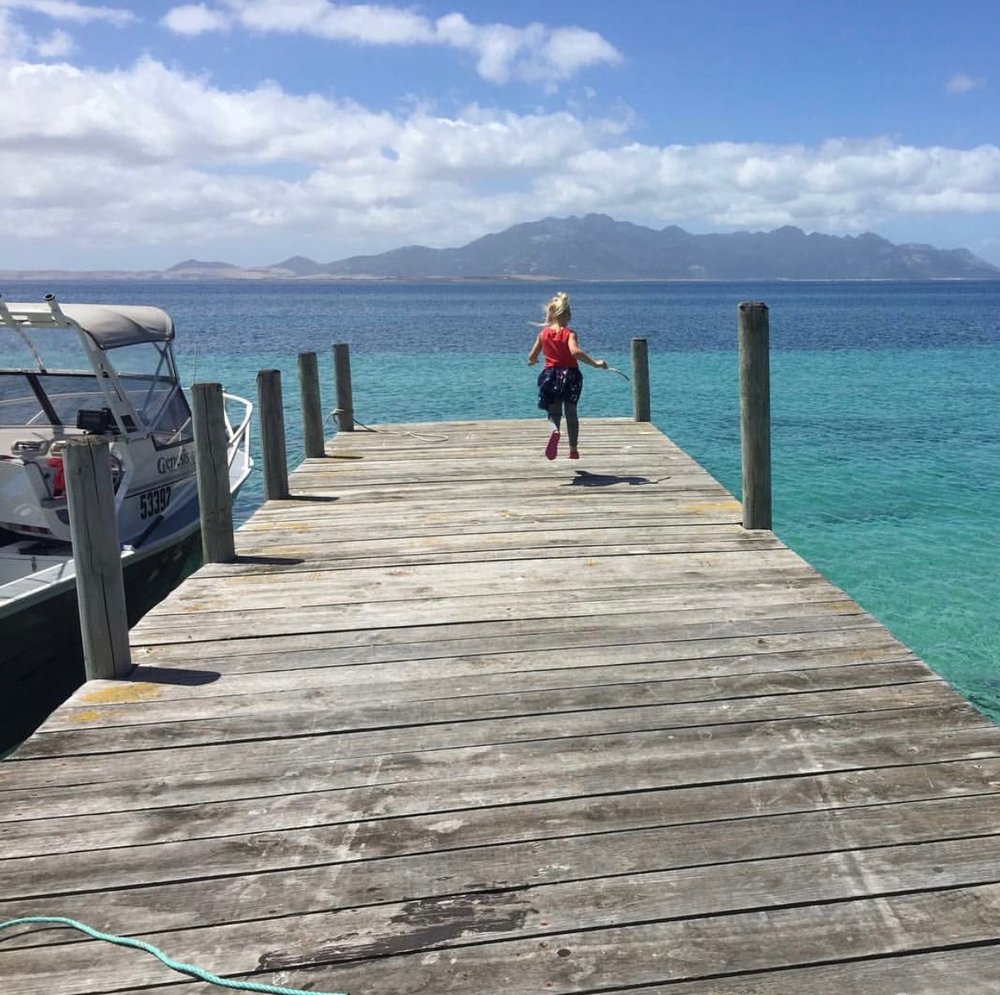
Flinders Island. Image credit: M. Boyes
Growing up on Flinders Island was different. We had the same education as everyone else, the same values and understanding of the world as other kids elsewhere, but what made us different was our backyard; our zest for adventure and our respect and appreciation of what nature can offer and teach us, if we let it.
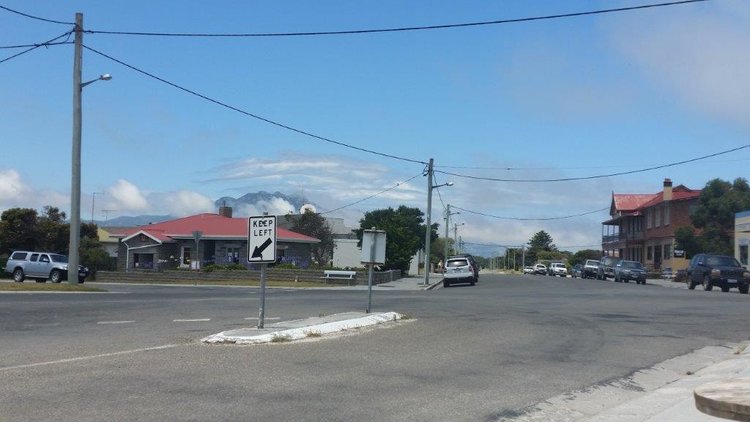
Flinders Island Capital - Whitemark, Image Credit R. McCabe
Our island paradise taught us how to respect the ocean, the land and the bush. Our families were traditional land owners, farmers, fisherman, nurses, storekeepers, butchers, bakers, teachers and more; all of which contributed to our respect of the land and understanding of how special our home was.
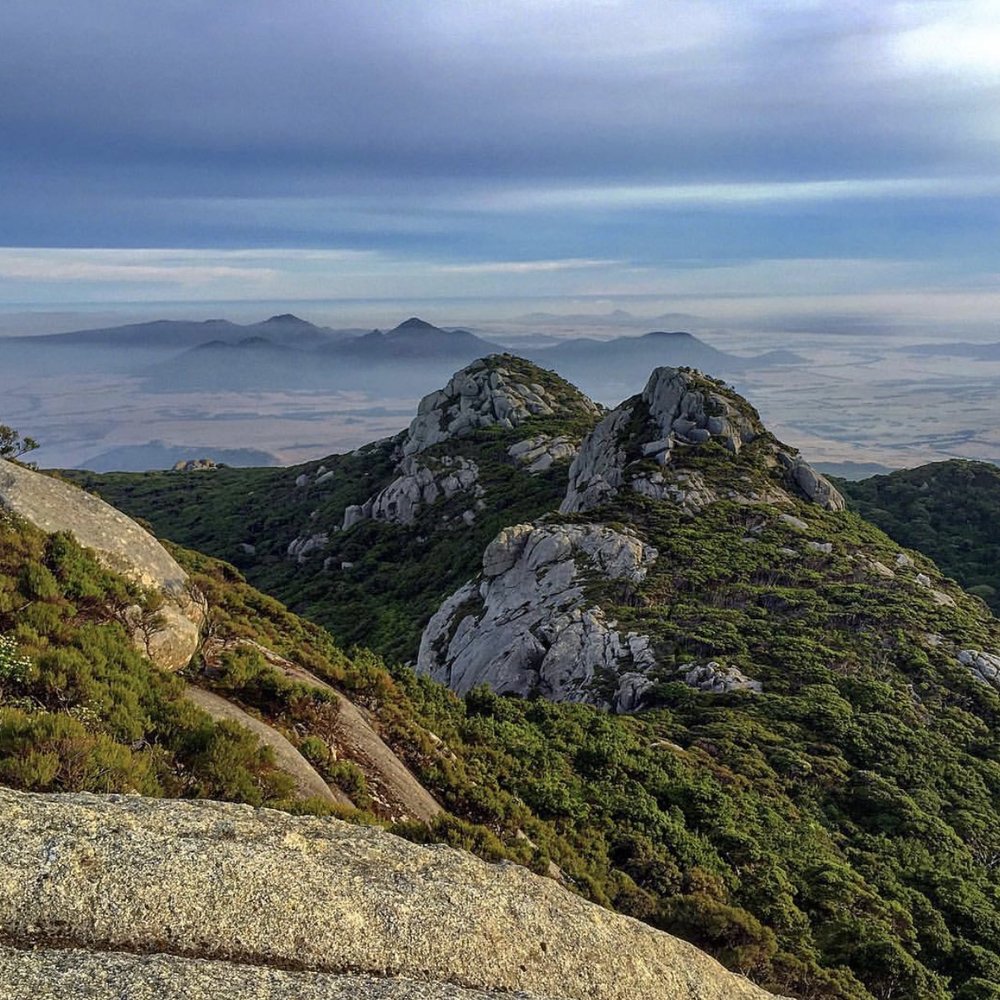
Mt Strezlecki Image Credit: P. Beaston
Many locals have ancestors that originate back to European occupation of the Island. Sealers brought their Aboriginal wives in the early 1800's, and there was a number of Tasmania's Original Inhabitants exiled to Wybalenna in the Islands north, from 1830 until the 1850's. The Aboriginal settlement was then relocated to Oyster Cove near Hobart. It was not until almost 100 years later that Flinders Island had freehold land available and a settlement scheme initiated.
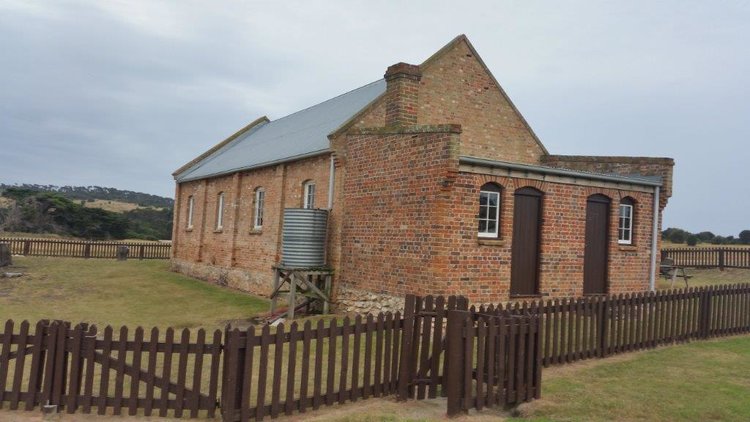
Wybalenna Chaple Flinders Island. Image Credit R McCabe
As I'm sure you can appreciate, the history of this magical place is deep. Full of growth and inspiration but also a intense sadness. Visitors of the Island can experience a community where the past is shared to educate, and those who came before us respected. Every family no matter what their origin, shares the same passion for the Island and are more than willing to tell you a story about its beauty, it's people and culture, and how wonderful their lifestyle is, generally over a beer or two.

Flinders Island Image Credit A. Conroy
Our favourite past times as kids, from kindergarten through to highschool was going to the beach. We would ride our bikes or walk for an hour or more just to get to one. Every part of Island life involves the water in some form. Swimming, camping, BBQs, fishing, surfing. Even our swimming carnivals were held at the pristine Trousers Point Beach, which follows along the coast from the base of Mt Strezlecki National Park.
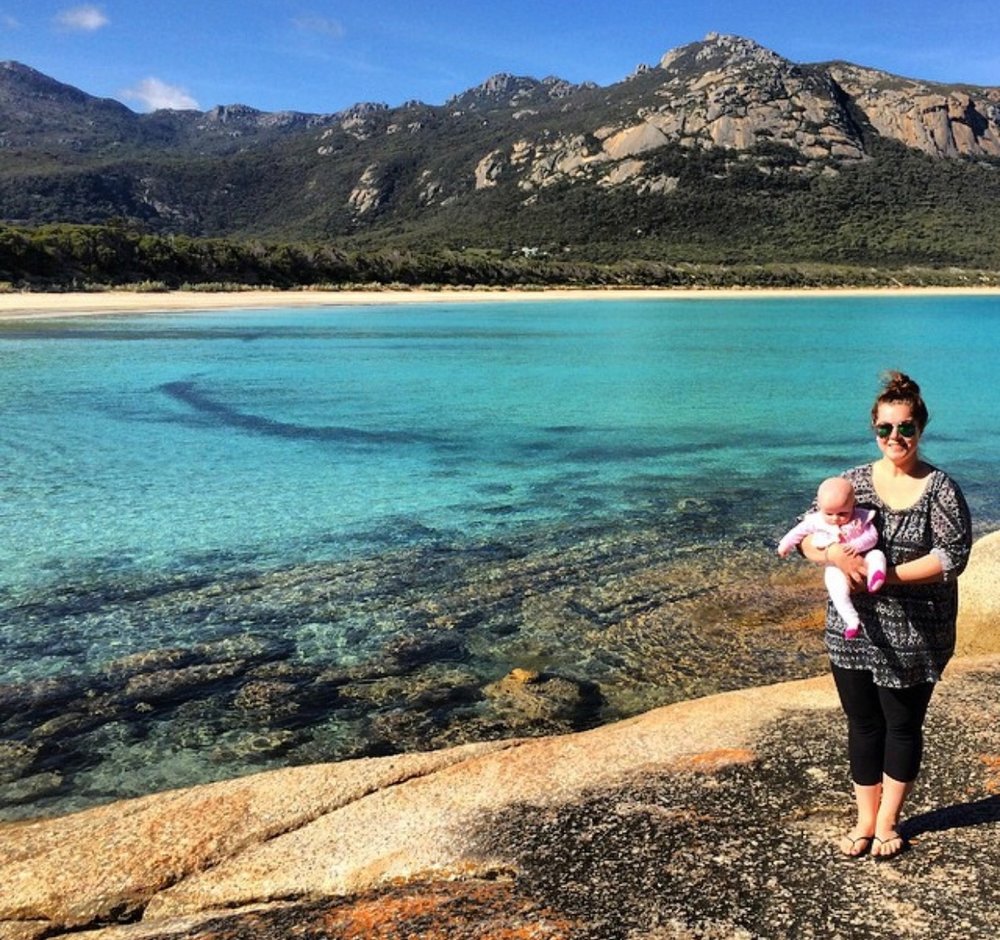
Trousers Point Beach with Mt Strezlecki in the background. Image Credit K.Willis
The beaches are all different in their own right, and we visited each one for different activities. The best swimming ones for me as a kid, were Yellow Beach in Lady Barron and Allports Beach at Emita. You can swim at almost every beach around the whole Island but these ones we frequented the most. The waters were always clear and deep enough to swim out a fair way. The views are amazing. Not that we focused on that too much, as kids.
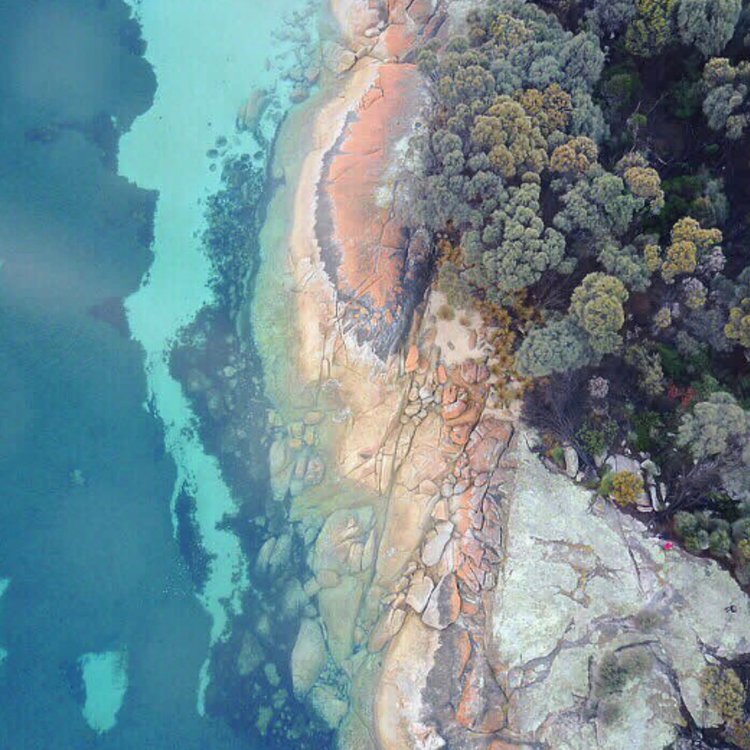
Flinders Island. Image Credit: T Boes
White Beach in Lady Barron was a great for beach combing. You can walk for kilometers starting from the road where you parked, right around the point and beyond. You can also see the wreck of the Farsund really well at low tide. The Farsund ran around in 1912 and now is a great dive spot. I also remember running along the low tide marks dodging the Soldier Crabs at this beach, as they scurried along the sand. Hundreds of them. I'd love to witness them now, bright red; their shells glistening in the sunlight. It's been a couple of years since I've been back.

Flinders Island Lady Barron Image Credit: G.Green
My favourite place in the whole world is on Flinders Island. Known as The Docks, the track into this magical cove is gravel, and to find it involves counting the power line poles as you travel along the main road north. It's not a secret spot, but there are no signs pointing it out. To get there drive along Palana Road, past the Killiecrankie turn off. Not far past the turn off is power pole #334. Turn down the track next to this pole. Once you arrive at The Docks a small camp area is nearby, with granite boulders enclosing the beach on either side. Tee Trees and Sheoaks line the banks, and giant gums tower up from the ridges of Mt Killiecrankie behind. Cliffs form a back drop, popular for abseiling and rock climbers every summer, and kids of all ages.
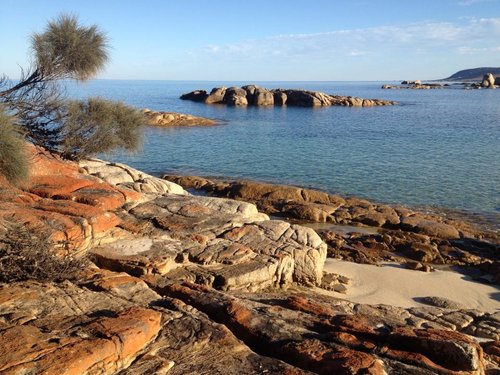
The Docks Flinders Island

Early morning coffee at The Docks Flinders Island
The waters here are the purest I've ever seen. The sand feels amazing between your toes. I can't recall a summer when we didn't spend nights camped here in the back of our old Nissan Blue Bird wagon sleeping on a foam mattress. We loved hearing the sound of the ocean so close and were always impatient for morning to bring new adventures, swimming and more exploring. There used to be a coastal track that wound its way through the Tea Tree scrub to a smaller, private beach. In my mind I compare The Docks to the beaches of Bay of Fires. It's way better than those beaches.
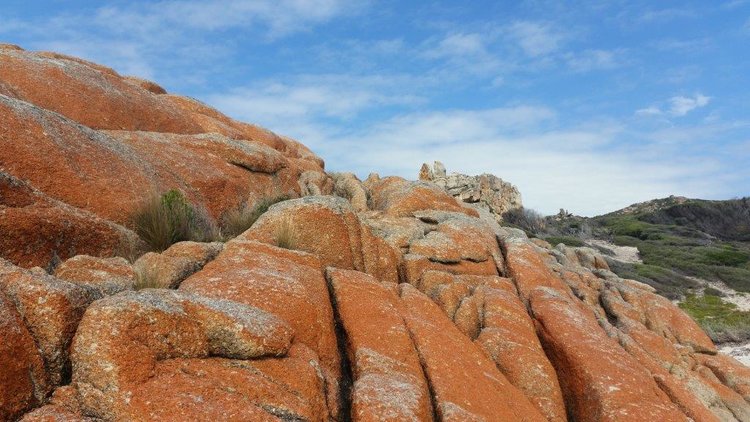
Flinders Island Image Credit R. McCabe
We were always the only people there when we visited; collecting shells, swimming and building sand castles. When I last returned to Flinders we camped at The Docks for a few nights, sleeping on the back of the ute under the stars for old times sake. It was magical and we were often greeted in the morning by a friendly wallaby, sniffing around for a treat.
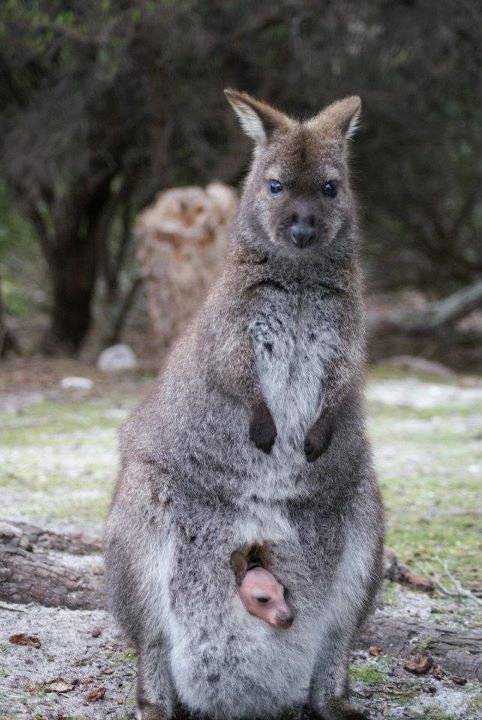
Wallaby with a joey
Wallabies are everywhere on the Island. You won't go more than a few kilometers without seeing one at dusk. If you have never hand fed a wallaby or seen a joey poke its head out from its mothers pouch you're guaranteed to on Flinders. Wallabies often have two young in their care at once. One in the pouch and another nearby. A great place to feed wallabies and see them up close is The Patriarchs Conservation Area on the eastern side of the Island.
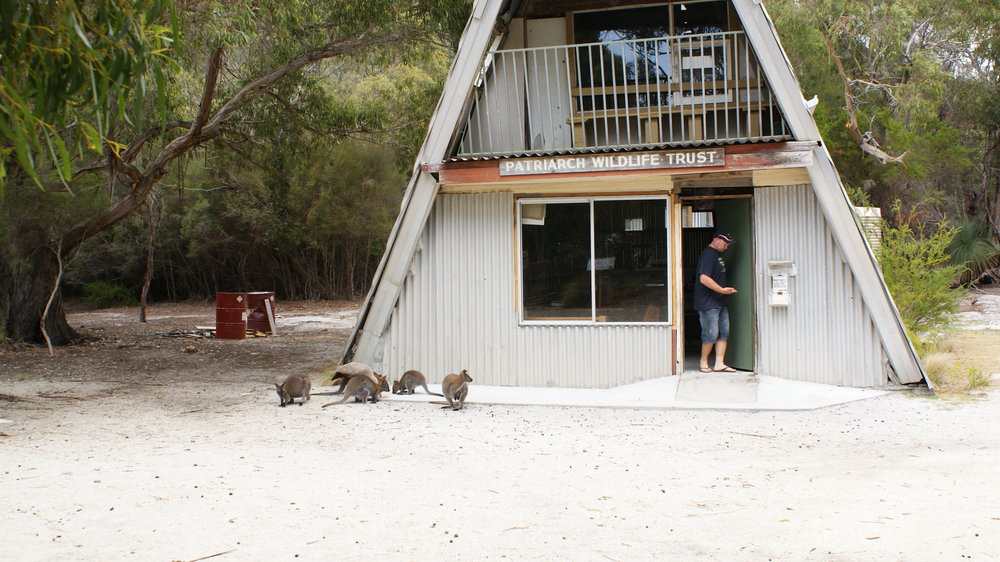
The A-Frameat the Patriarch Sanctuary.
This A-Frame building is located in the Patriarch Sanctuary, and was built in the 1970s to protect the Cape Barron Goose. Today, the sanctuary is popular for school groups, campers and tourists. A bin of pellets is often inside the building ready for you to feed the animals. The building is never locked. Islanders work on a trust system. You use something, you replace it. Except the wallaby pellets, of course! The little marsupials are very friendly, eating right out of your hand. Be sure to not give them bread though. It creates lumpy jaw which are ulcers in their mouths; eventually starving the wallabies as they cannot eat.
My sister and I had an old postie bike in highschool. It had third gear missing, bald tyres and a hessian sack filled with old towels as a passenger seat. We rode it everywhere. At the time, we lived not far from the Patriarchs and often spent a whole day exploring back tracks and finding beaches. We saw plenty of Tiger Snakes, and loads of wallabies. We often called into the Patriarchs Statuary to eat our snacks, and feed the animals.
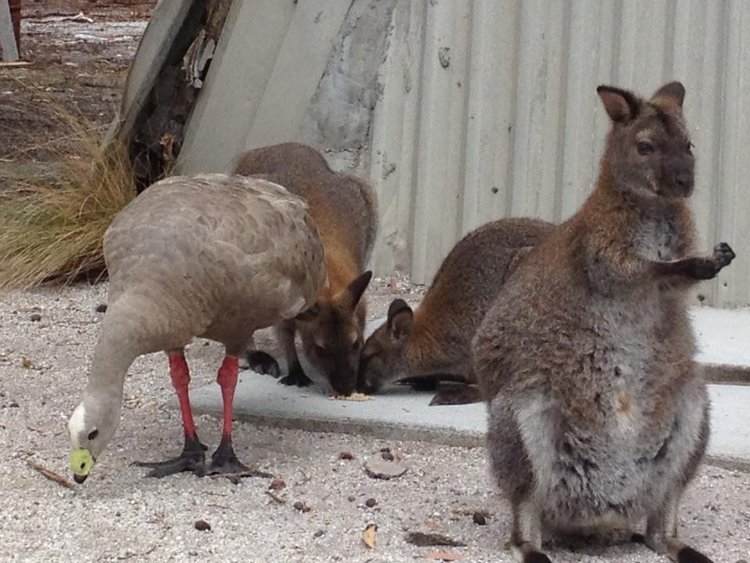
Cape Barron Geese and Bennetts Wallabies Flinders Island
Flinders Island is also home to some very famous wombats. You may have heard of Derek, Kate Mooney's orphaned little friend who was made famous by a tourist who visited and filmed him. The video was put on You Tube and went viral. Kate raises orphaned animals, mostly wombats that have had their mothers killed by cars or illness. She releases them back into the wild when they are old enough. Head into Bowman's Store in Whitemark where you will be bound to see one sleeping behind the counter. Islanders love their wildlife, as you will experience if you have to chance to visit.
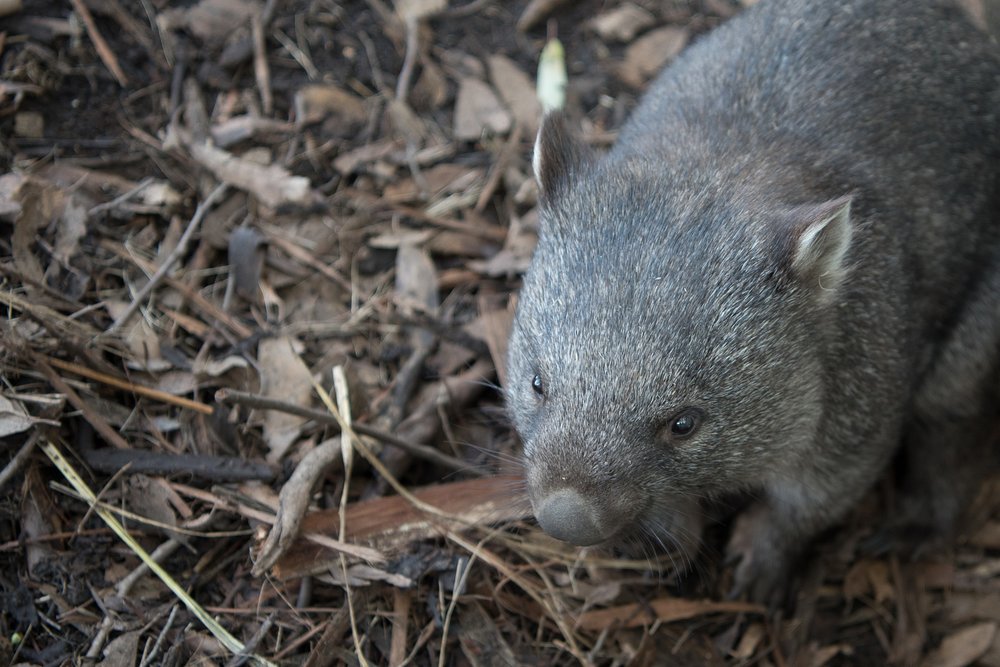
Island wombat
Another popular animal of the Island is the migratory Shearwater, or Mutton Bird. As a child I was lucky enough to travel to Big Dog Island, one of the 51 Islands surrounding Flinders in the Furneaux Group. Big Dog is owned by the Original Tasmanian's, and many Aboriginal families still travel there every march/April to catch and process the delicious bird for market.
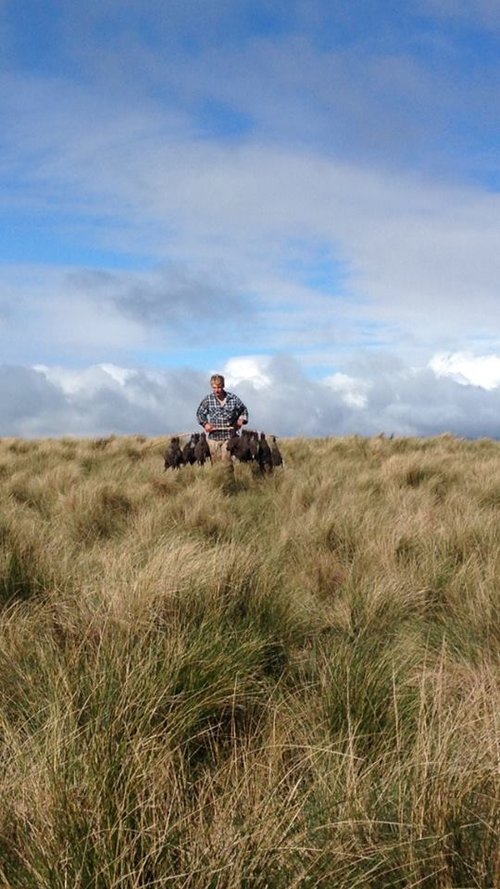
My brother Mutton Birding. Image Credit B. Jones
I remember spending an Easter on Big Dog when I was around seven years old. The Island was beautiful. We arrived in a tin dingy, full of supplies for the workers and before we went to our camp we cruised around the island dropping of supplies to other camps. Community and culture are very strong here and I remember seeing a number of other kids being taught traditional ways to process these birds. Harvesting Mutton birds has been a generational practice for many Islanders for as long as they have called these islands their home.
Practices have changed a lot since early times due to food processing regulations, however catching and preparing these birds for sale is still a strong Aboriginal annual tradition. Every season birds can be purchased from quality butchers and suppliers around the state, generally towards the end of April and during May. It's an acquired taste. A slither of Mutton bird was the first food my brother ate as a toddler. Today he still loves them. As do I!

Flinders Island Tassie4Kids
Flinders Island is a heaven for any child. The best memories of my time there were created in the wide open spaces and at the amazing beaches. Its the perfect destination for a family holiday, and you will need at least five to seven days to really enjoy it. If you want some serious inspiration, check out the Visit Flinders Island website, and their Instagram page. Part of the local Visitor Information Center, the team are wonderful and will assist with accommodation, sights, parks passes and more.
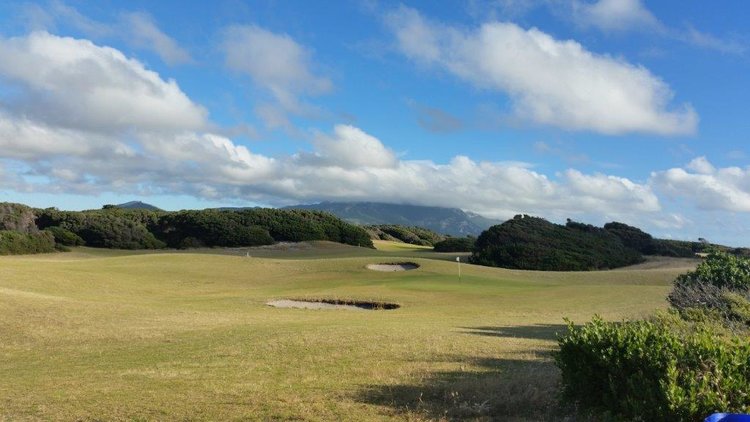
Flinders Island Golf Course Image Credit R,McCabe
To get to Flinders, Sharp Airlines fly daily from Launceston and Melbourne. Click here for flight timetable and ticket prices.You'll fly into Whitemark, the capital.
You can also bring a car over on the boat from Bridport. It takes anything from 8-16 hours depending on weather. I've done it twice. Both times were rough and I was sick. My husband came with me the last trip and is a Master 4 Skipper. The trip was that rough many were 'unwell' around him, including me. After checking I was OK he returned to sit in his Ute to finish reading a book!!! Click here for more shipping information.
Car hire is available on the Island, Rowena and Justin run Flinders Island Car Rentals and have great packages that will get you everywhere you want to go. They are generational locals so can fill you in on the best spots! Rowena and Justin will also pick you up from the airport and drop you off, should you need.
There are a number of family accommodation places on the Island, from private houses to camps, BnB and hotels. We can recommend The Furneaux Tavern in Lady Barron, and Yakkalla Holiday Cottage. Both are reasonably priced and in great locations.
Be sure to check out the great beaches, Castle Rock, fossick for Killiecrankie diamonds, eat a giant Parmy at the Interstate Hotel, taste some Flinders Island Wallaby and sample some of The Jugglers Hot Sauce. A climb up Mt Strezlecki is well worth it, as is the trip to Palana and West End in the north of the Island.
Have any Flinders Island holiday memories to share? We would love to read about them. Tag us on Instagram #tassie4kids or facebook @tassie4kids!




Thats our blue kyak and white paddle board in the photo of Killiecrankie!!